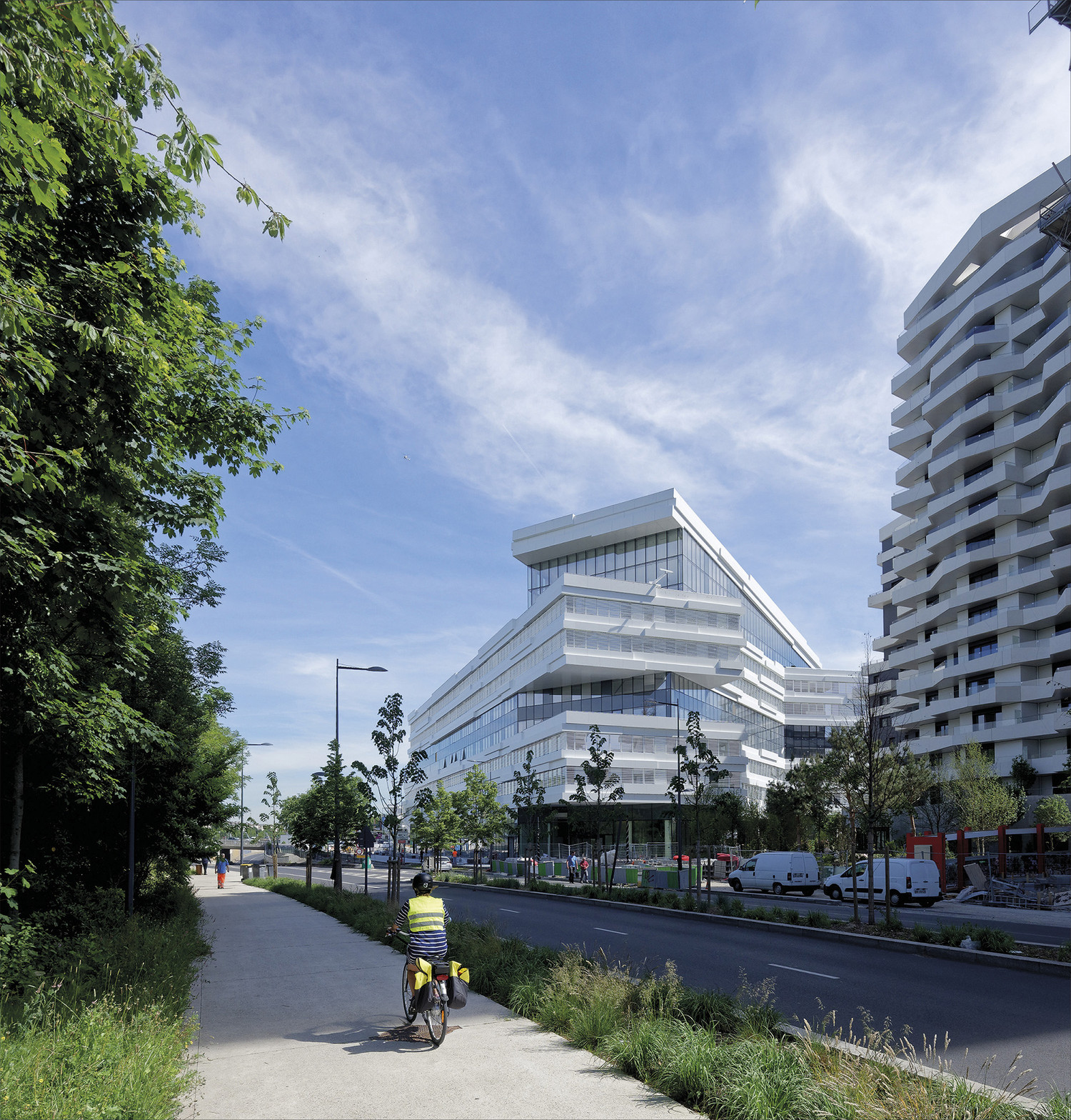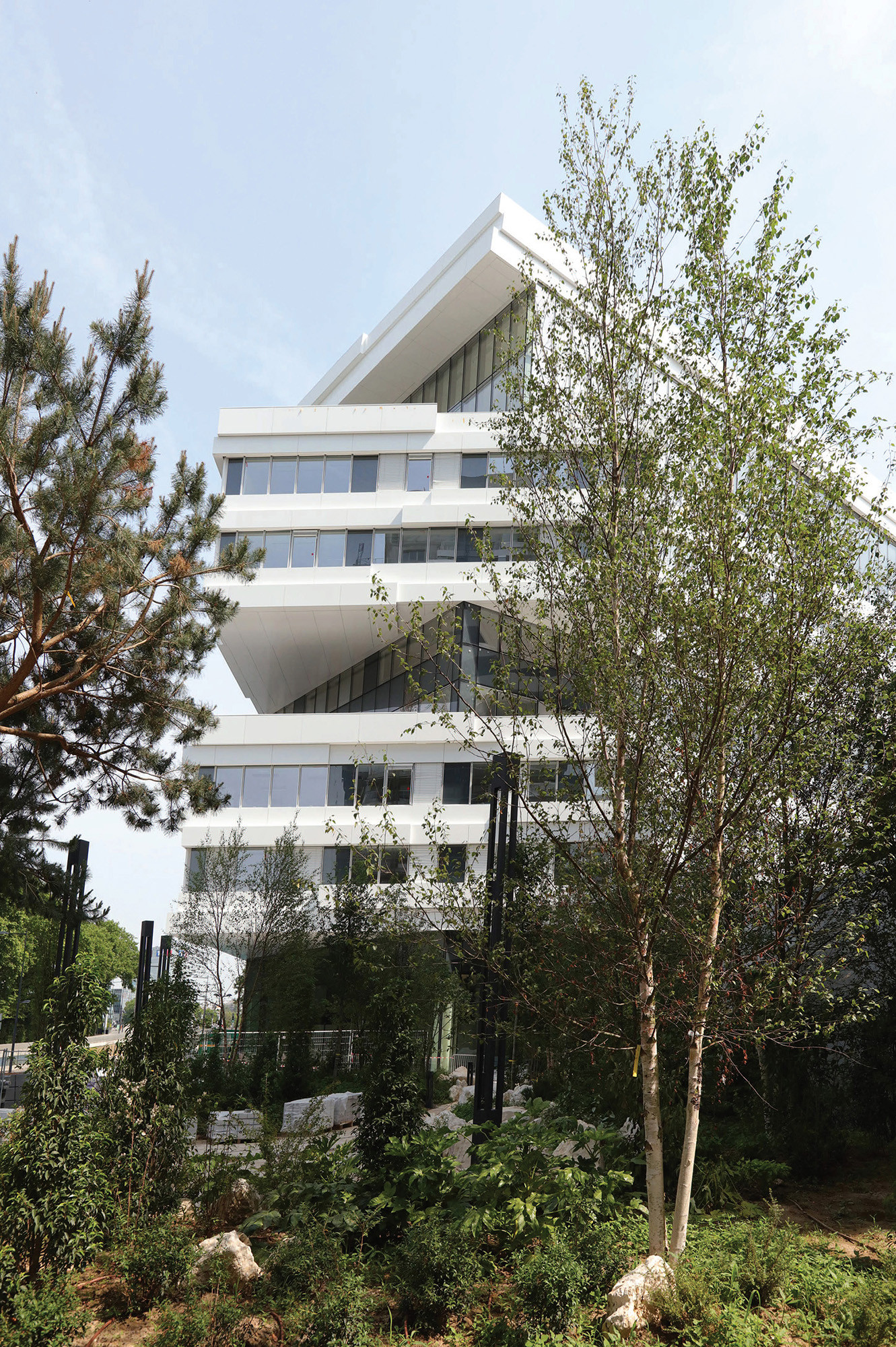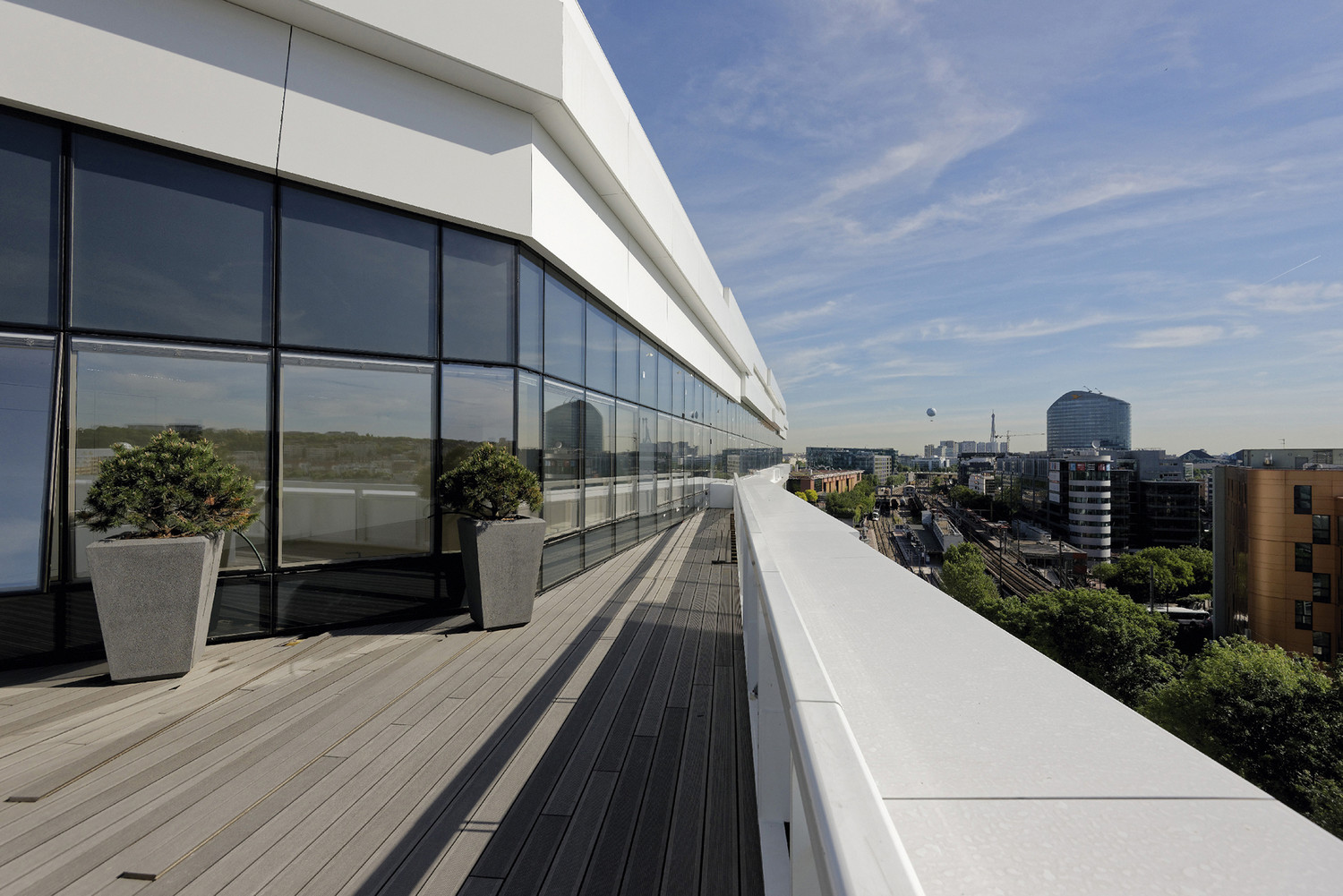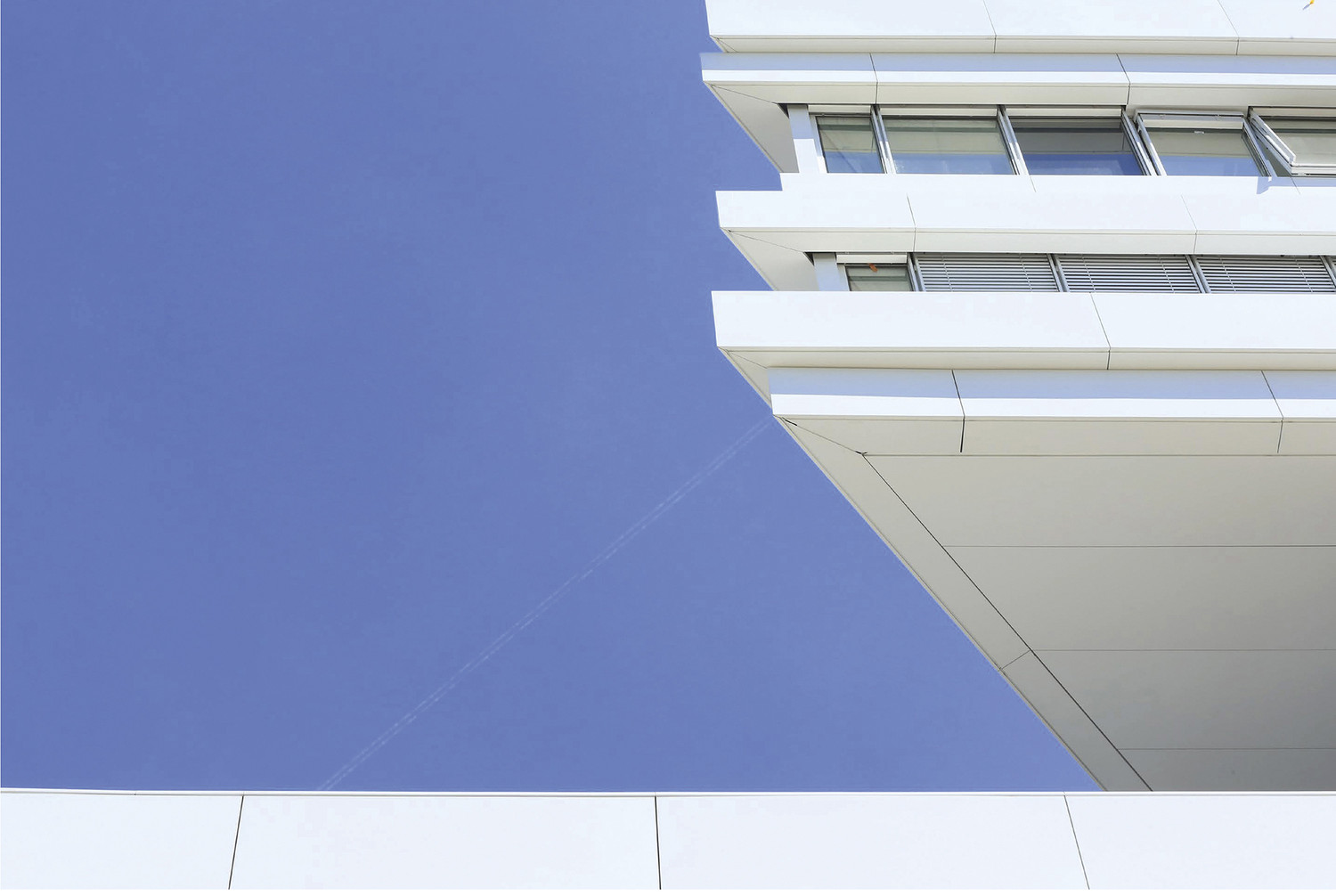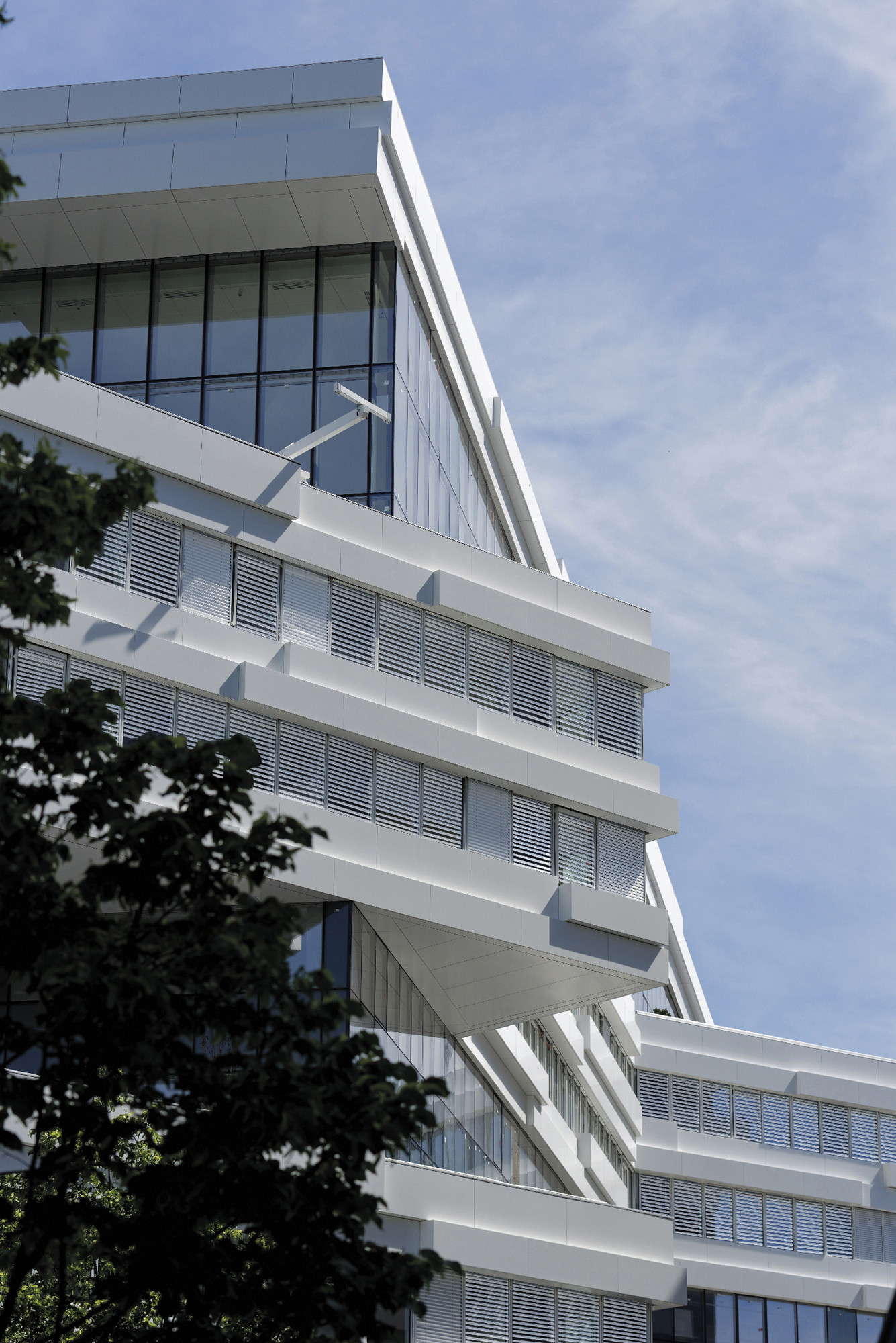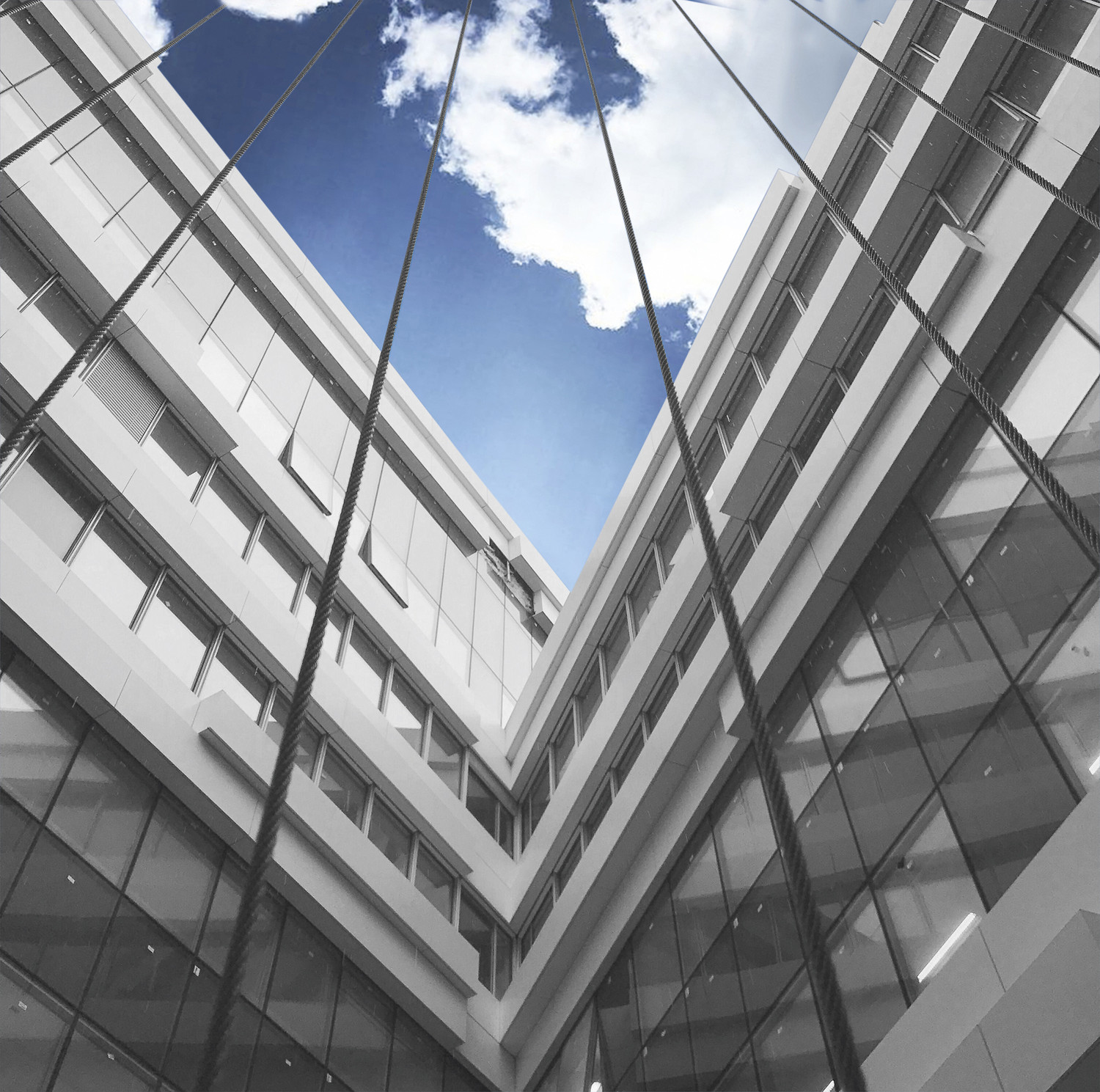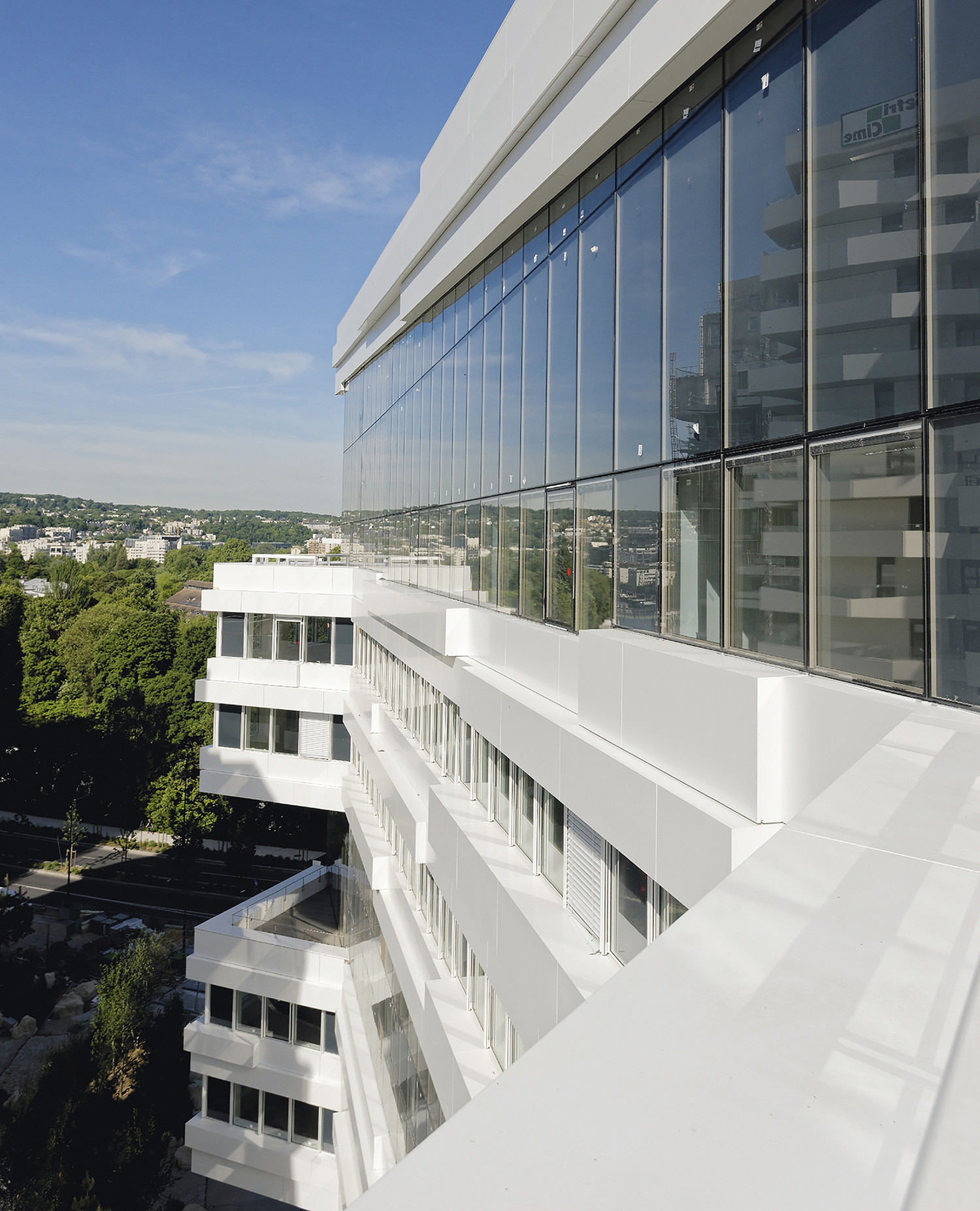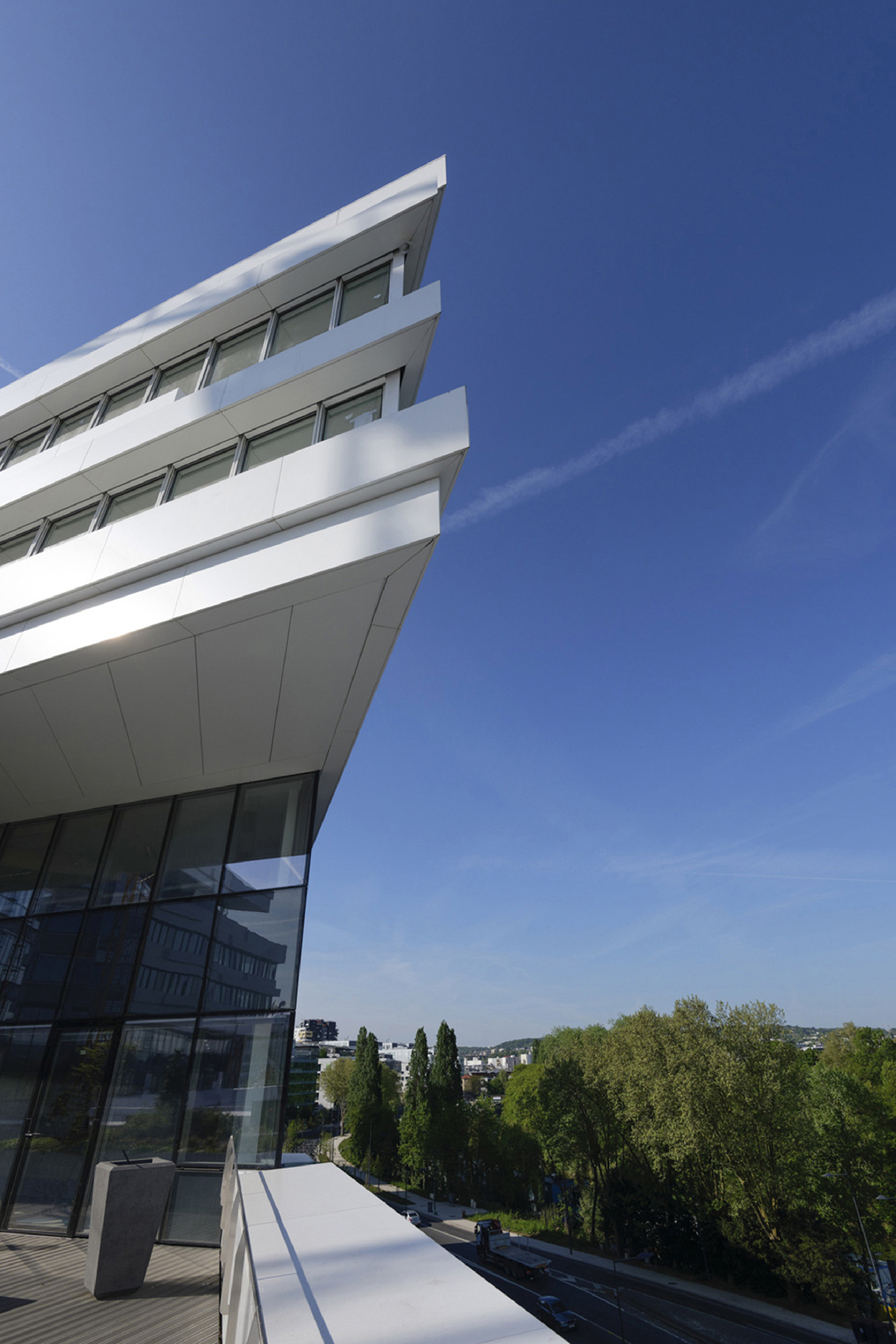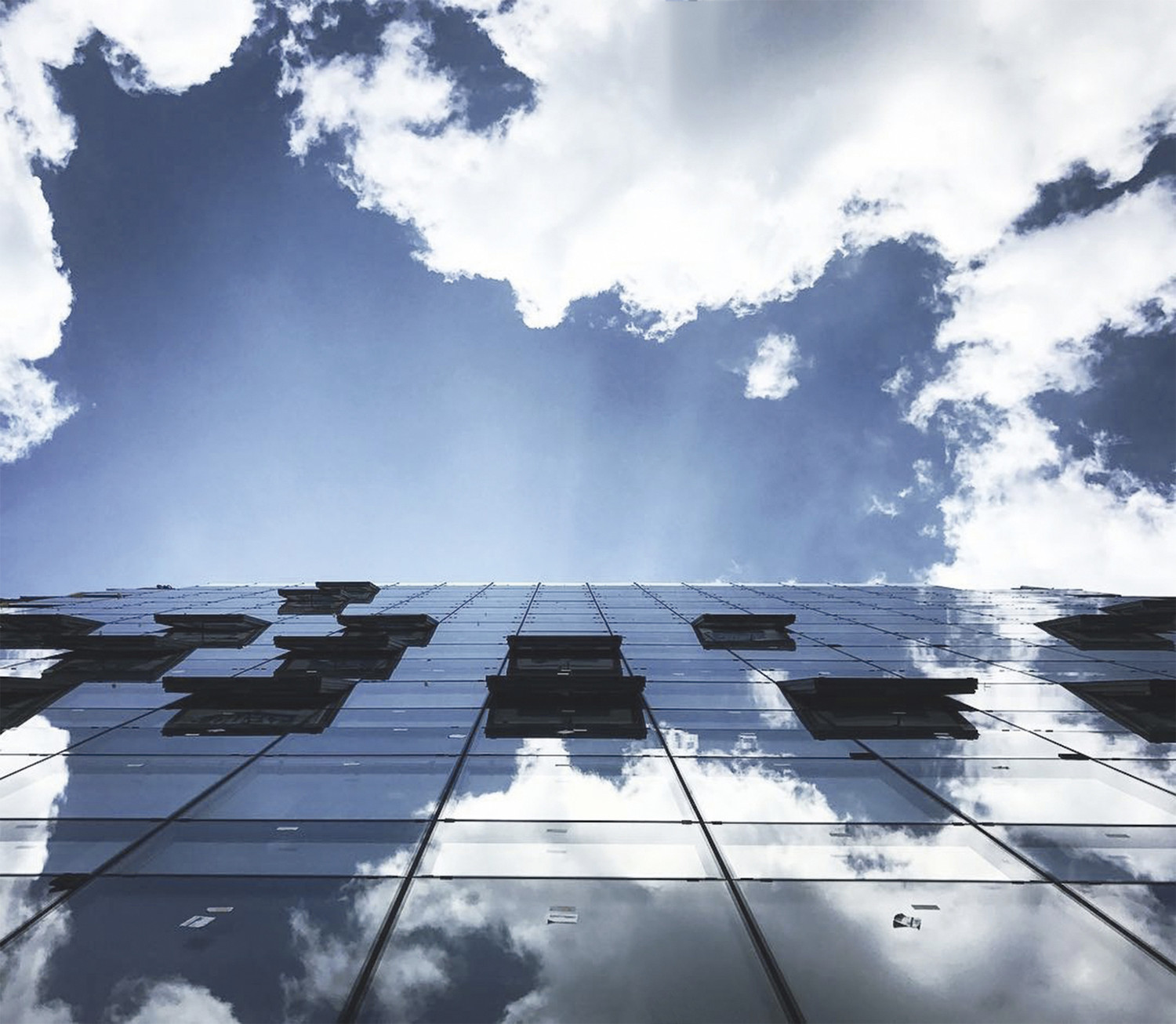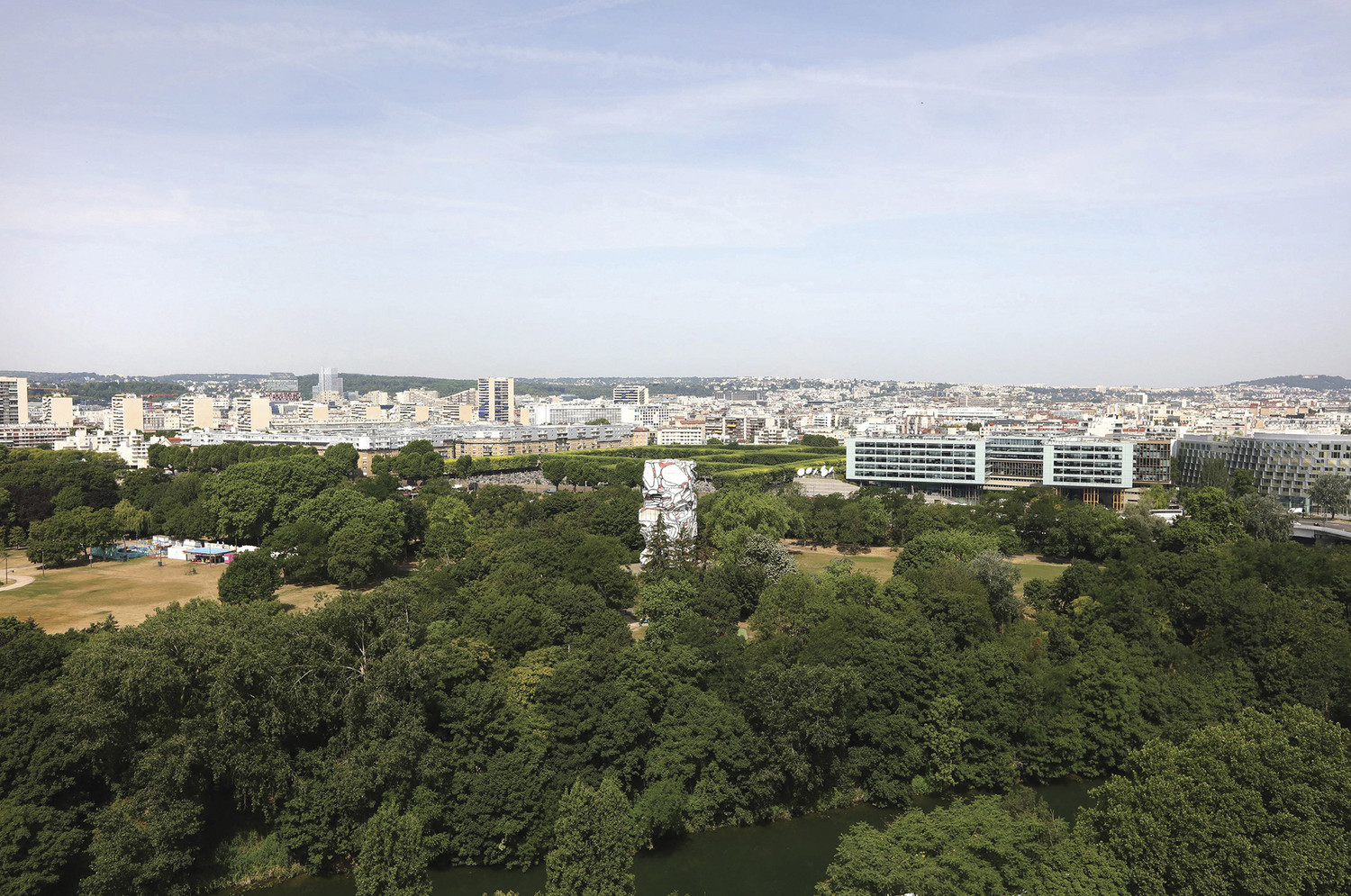
You are using an outdated browser.
Please upgrade your browser to improve your experience.


|
Loci_City | Projects | Studio | News | Press | Contact | Fr | En |
| Loci_City | Projects | Studio | News | Press | Contact | Fr | En |
«Campus Aquarel, Pont d’Issy »
Implanté en bord de Seine, le Campus d’Issy-les-Moulineaux bénéficie de vues et de perspectives exceptionnelles. Conçues comme une superposition de strates, rythmées par des jeux de retraits et d’angles, ses façades sculptées captent la lumière. Le bâtiment offre des espaces de travail en triple orientation, de larges terrasses extérieures en hauteur accessibles à tous. Livré, le Campus a dû être agrandi pour répondre aux demandes de Cap Gemini qui s’y installait. L’agence a réalisé en 12 semaines, une extension en bois de 7 étages et de 3122 m2 sans modifier les structures existantes.

| Program | Office Headquarters |
| Investor | AXA Investment Managers Real Asset |
| Developer | SEFRI-CIME |
| Floor area | 33708 m2 area including 3100 m2 R+8 storey timber structure extension |
| Location | Issy-les-Moulineaux, Grand Paris |
| Architect | Loci anima, in collaboration with Arte Charpentier |
| Project director | Vincent Laplante |
| Interior Designer | Jean-Philippe Nuel |
| Site manager | Artélia |
| Structure and timber structure engineers | Terrell |
| HVAC Engineers | Egis bâtiments |
| Façades Engineers | Elioth |
| Quantity surveyor | CEE |
| Security consultant | CSD-FACES |
| Environmental engineers | Egis Concept |
| Landscape architect | Land Act |
| Acoustic engineers | Avel |
| Kitchen consultant | Axyal |
| Health and safety-building control | Socotec |
| Cost of works (HT) | (without wood extension) 70 M € |
| Date | Livré en 2017 et extension bois en 2019 |
| Certifications | HQE excellent, BREEAM very good |
| Prize | Golden pyramid first prize for urban mixed use developments in 2016 for the Pont d’Issy eco-district mixed condominium and affordable housing, shops, offices, services and green spaces |
| Photographers | © Jean-Pierre Porcher / © Grégoire Crétinon / © Aziz Ghanine |
This building is part of a set of buildings that has been evolving constantly over 10 years. The studio drew inspiration from the Seine and from its geology to design it as a stratified rock, eroded and sculpted by the elements and by time. This explains its rocky aspect. Like a relief from the Quaternary period, it’s a geometric “system” intended to adapt to the site as it evolves and the whole design is determined by the views. An audacious architectural choice was made to stack up cantilevered elements with set-back façades.
A biomorphic building
It is a biomorphic building. The lines are borrowed from mineral forms and are architecturally expressed in the superimposition of the strata of the façades. At the edge of the river bank, these sculpted façades capture the light. Seeking to respond to human heliotropism, the white façades with their adjustable Venetian blinds alternate with darker double-glazed breathing façades that have an integrated solar shading system.
This building is designed from the inside, by working on its openings so as to be able to provide as much natural light and as many view points as possible of the Seine, the Ile Saint Germain and Paris. So the project has a special relationship with the landscape, it has workspaces that face in three directions, large outdoor terraces on the higher floors that are accessible to all. All the outdoor spaces are linked to the workspaces and that blurred the indoor-outdoor boundary.
A wooden extension
When the building was completed, the studio had to extend it to meet Cap Gemini’s requirements.
The building is in a U shape around a garden. This gave us the idea of a metaphorical tree in the garden. Using wood meant that we were able to construct a 7-floor extension covering 3,122 sqm in 12 weeks, without modifying the existing structures. Today, in the ground level garden, the randomly erected wooden beams recall this original idea and create an impression of trees in a forest.
